In Screenshot Saturday, I’ll share the top screenshots from the most unfiltered and unhinged album in my personal camera roll, along with a little background on why I saved this image, and what it tells me about trends I’m seeing and keeping tabs on. I wrote this in small bursts this week on the metro to work.
Let’s dive right in.
1. Reformer Pilates (and introducing it to men).
Like many millennial women, I’ve gotten into reformer Pilates in the last few years. It’s a workout that’s typically been reserved for Hollywood celebrities and wealthy urban women with private or semi-private instruction. The classes would be max. 3 people and you had to communicate directly with the instructor to book. But the introduction of Solidcore, SLT, Bodyrok and other supercharged Pilates-inspired workouts—these using the mega-reformer—that took inspiration from HIIT classes and can fit 20-30 in a room helped introduce the fitness lifestyle set to these machines. Now there are studios, especially in posh cities like Paris, New York, Miami, LA, London, etc. where you can do lower impact, less excruciating but still challenging reformer Pilates in classes with around 10 people. I love these. But I’ve also noticed that there are memes circulating in fit women algorithms about bringing men—often boyfriends or professional athletes—to Pilates and seeing how they fare. Some are thirst traps of pro football players breathing through the 100s. Some are male partners wincing at rep 8. The punchline is always that Pilates, a discipline mostly practiced among women, is also an athletically difficult practice and worthy of respect.

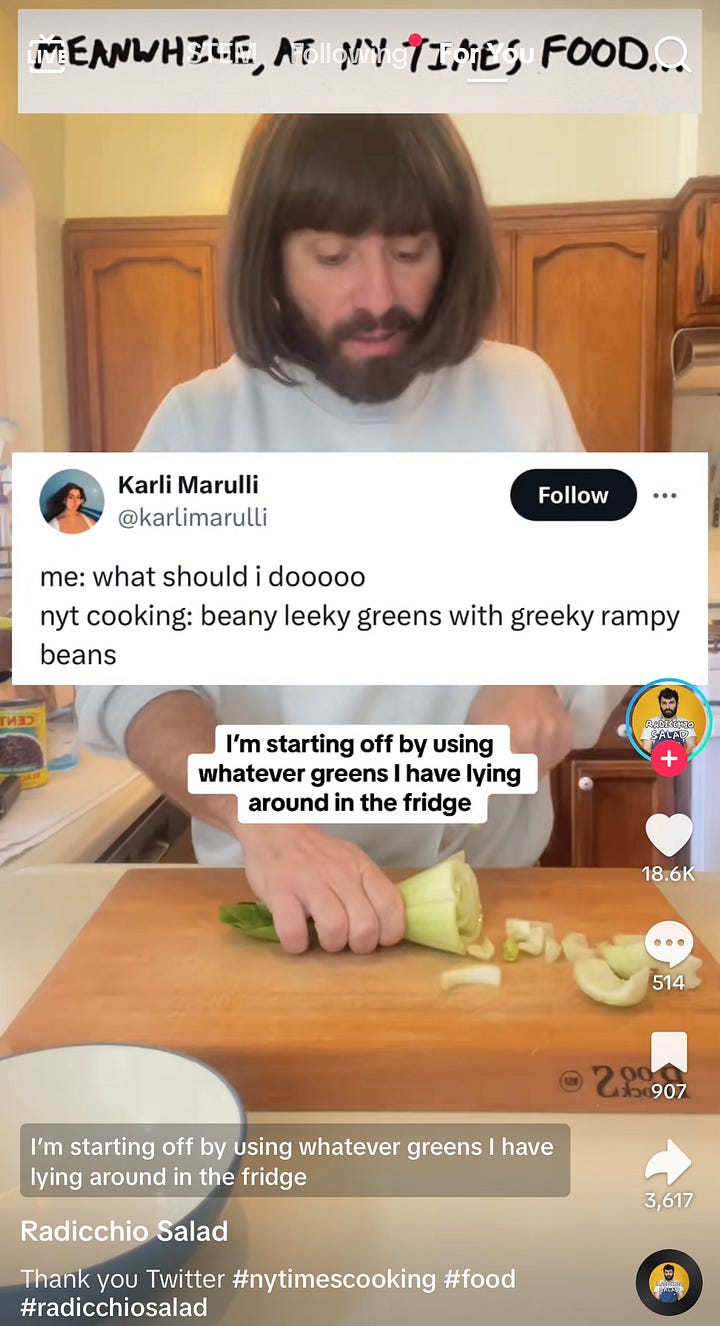

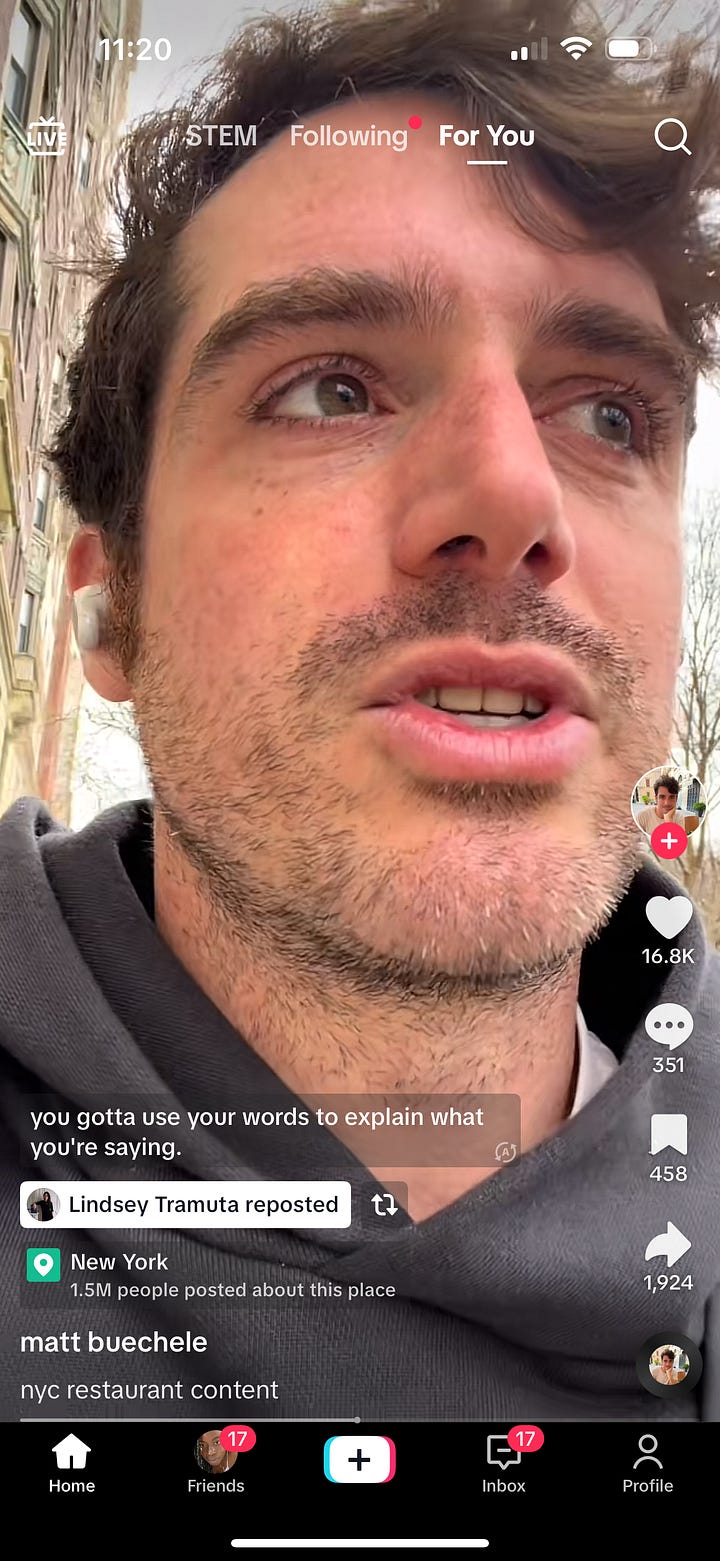
2. Backlash against non-descriptive, cutesy thingy situation speak
Few trends bother me more than the erasure of precise language in favor of flattened internet group-speak. TikTok accelerated its adoption, warping the way we signal insider knowledge and describe the world around us: something is aesthetic, instead of aesthetically pleasing; it’s the details, instead of specifying which details; it’s giving, instead of metaphorically illustrating what something resembles or exudes; it’s vibes. But in food writing, introducing dishes or recipes with childlike, non-specific language softens a difficult technical skill, whose expertise is earned through significant trial and error, with the hopes of seeming approachable and effortless—like, “oh, this? I just whipped it up.” It’s supposed to seem inviting and approachable, but to me comes across as stilted and out of touch. It feels like the internet is tired of this too.
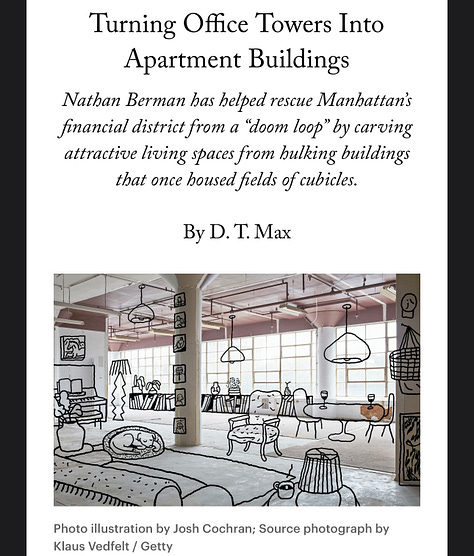


3. Illustration over photos
Especially for creative business collaborations, the new style is dramatic black-and-white photos, given just a pop of color or playfulness with organic shapes painted over them courtesy of a few squiggles from an iPad drawing tool or real-life watercolors and oils.
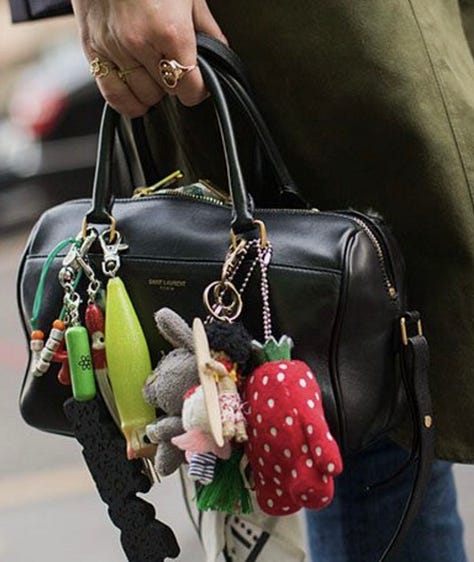


4. Bag charms and plushies
Drape a teddy bear charm off of your Birkin and you’re on trend for 2024—the bigger, more childish, and gaudier the better. Brands like Loewe are selling their own, but the idea is really to let these charms hang as a cluster off of an otherwise very polished and structured bag (usually expensive), commingling the playful amidst the polish. This is not a trend I’ll personally be buying into, but it’s a fun one that seems like a natural outgrowth of romanticizing “girlhood” and its signifiers (bows, anklets, friendship bracelets, etc.).


5. Categorization
One of my Gen Z friends was recently telling me that he is tired of trying to figure out which labels everyone fits into. Extrovert or introvert? Mob wife aesthetic? Golden retriever boyfriend? Babygirl. Eclectic grandpa. Cottage core. And so on. It’s new neighborhood realtor logic—creating more niche categories allows easier opportunities to market and target. It’s the algorithm laid bare, rather than authentic subcultures and scenes emerging. And they cycle too quickly. Just because these labels are influencer catnip that successfully command media attention, doesn’t mean we need to ascribe to them, or even allow other people to give them to us.
6. Pithiviers and beef wellingtons
Meat stuffed in beautiful, butter-shellacked pastry is so back. Seen it in New York, San Francisco, Paris, and more. Nothing else to say, other than a well-executed one is terrific, very photogenic for Instagram, and I hope they’re still around in the next fall-winter season.

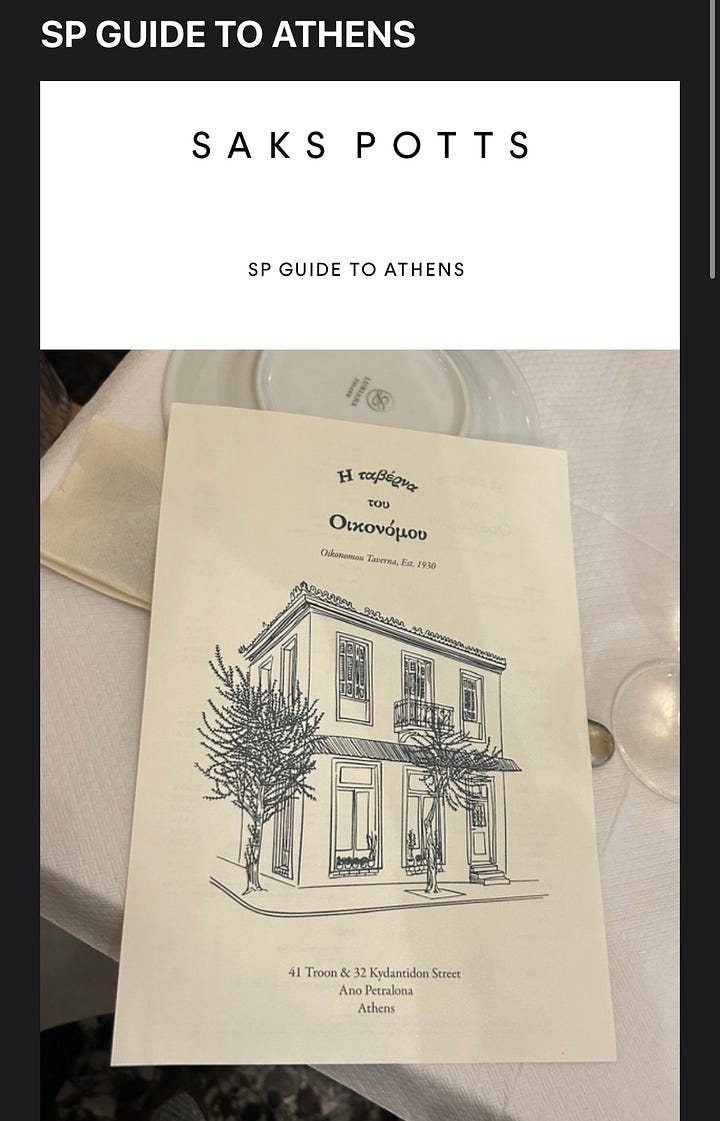
7. Brand city guides
I receive a city guide in my inbox from a fashion or beauty brand almost daily now. Do I really want the Saks Potts guide to Athens? Like…kind of? But not really? This is the natural Goop-ification of all brands, and the many taste-making publications slash lifestyle brands that came before it. Recommendations typically come from a distinctive point of view and are tailor-made for a recipient who is open to listening to that source; it indicates trust between the recommender and the recipient. Brands are buying in because it’s the easiest way to signal that the brand has a well-established perspective and a culture that you can (and want to!) be a part of when you purchase their clothes/shoes/beauty products/etc. It’s an extension of this is so us and gives you a way to participate.
8. Small food and hospitality brands get smart about Meta ads
For the first time, I’ve been getting a *lot* of restaurant and coffee shop advertisements on Instagram. These ads, usually still photos in the Stories carousel, are often timed ahead of launch day. They are set to drive viewers to the restaurant’s Instagram profile so it can build a following before opening. But I’ve also started getting ads for local places that have been open for years too. Kudos to them. Marketing a small, hyperlocal brick-and-mortar business is difficult and often relies on initial press around the opening and a steady drip of influencer marketing thereafter. Marketing via Meta and TikTok like many other small businesses makes a lot of sense, especially since geo-targeting has improved to target even on a neighborhood level. I’m taking note of it because, as with most paid user acquisition trends like this, it only takes a few too many copycats for the CPA to climb and catapult it out of reach again as a meaningful channel.



9. US vs. Europe economic comparisons
I recognize that I’m particularly attuned to this because I’m an American living in Paris, but I do feel like these conversations are coming up more than they ever have—at least since I’ve lived here. On the one hand, Le Monde is writing about how “Europeans can’t afford the US anymore,” and Americans feel like kings in a theme park when they visit. These differences, according to Le Monde, are driven by big tech gains in the US during the pandemic and during this AI era, and are so strong that it makes Europe feel cheap. On LinkedIn and in the startup community in the US, there are questions around labor arbitrage due to salary differences and a gold rush for AI development talent—of which there is a lot in Europe. Then, in Europe, there’s a low hum of a conversation about how to make it more technologically competitive, especially for young, fast-growth startups. More and more, key opinion leaders from this ecosystem are talking about how a lack of unified regulation (instead of per-country rules) and local exit options, are among the factors holding back very talented companies and founders here. I’m watching these conversations closely.


10. Disconnect between the way things feel and reality
There have been a few posts I’ve read recently that can be summarized by “the vibes are off.” One of them was about Sam Altman and OpenAI. Another one was about Duolingo and the farcical way it positions language learning; it’s education as entertainment, rather than education proper, and few leave their Duolingo sessions with meaningful fluency. Then there was that WSJ Gen Z money piece, about how Gen Z feels like its poor and lacking opportunities, in despair, when actually this cohort is economically better off than many generations before them. What’s going on?
11. Patches and repairs
It’s the natural extension of trends around upcycling and shopping secondhand that trend reporters started noting in 2023, but this year it’s converging with 1970s and 2000s style revivals. On the runways for the upcoming season, Chloe is showing patchwork jeans. Pinterest is offering ways to patch and stitch. I keep getting targeted with creative ways to patch pants holes and brands that offer a luxury spa for repairing your clothing. Do more with what you have.
12. Restaurants and cafes that don’t build out meaningful websites and rely on Instagram instead
Some have homepages that only lead to their Instagrams (e.g., Four Kings in San Francisco). The Instagram becomes the live home of their menus and opening hours—it’s updated more frequently and has a captive audience. Some new restaurants only have Instagrams (in Paris, Minore, Recto Verso, and La Bagarre), and skip making websites altogether. They build a social media following, and followers can understand in real-time when the place is open or has a special pop-up event. Many places only accept reservations via DMs.




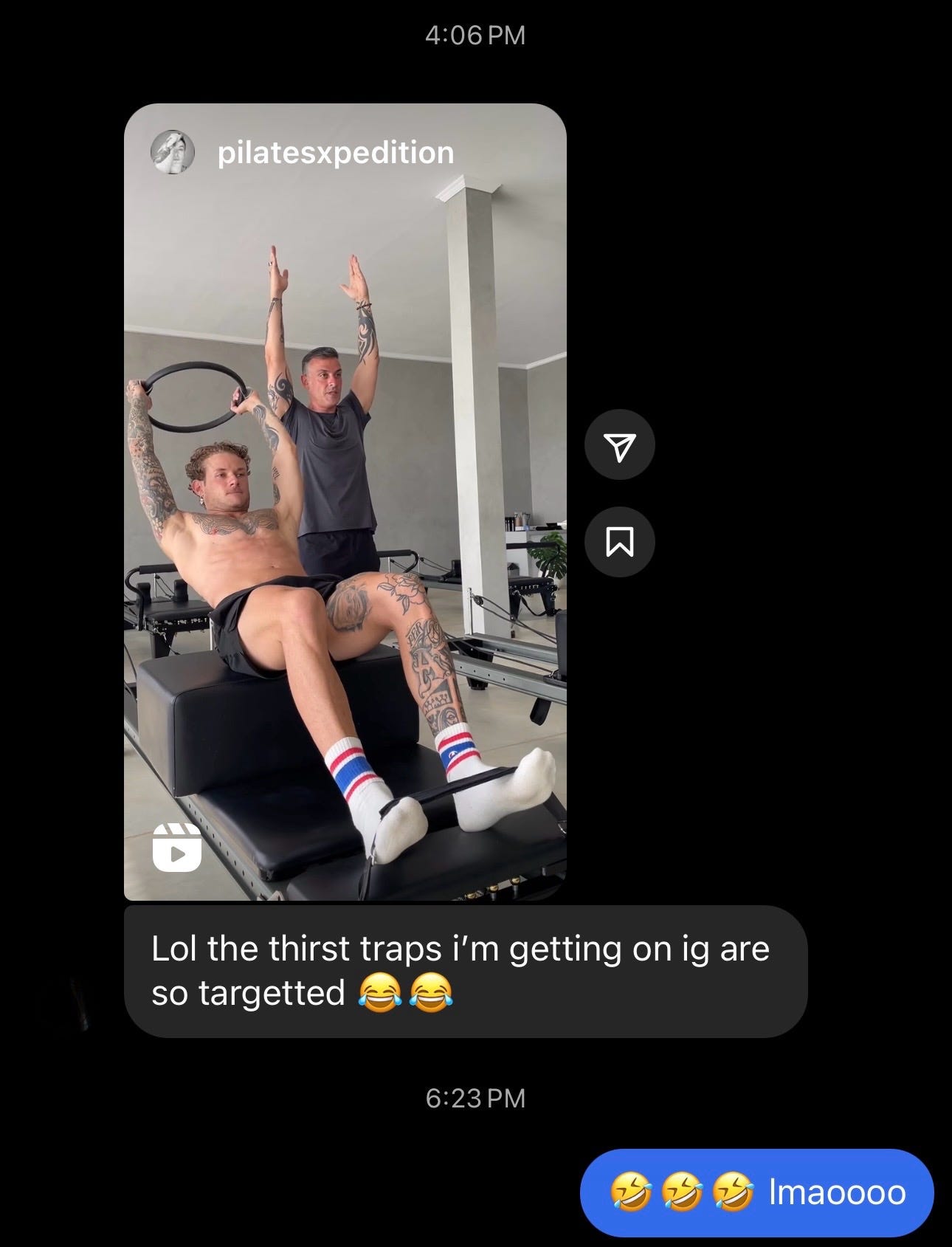

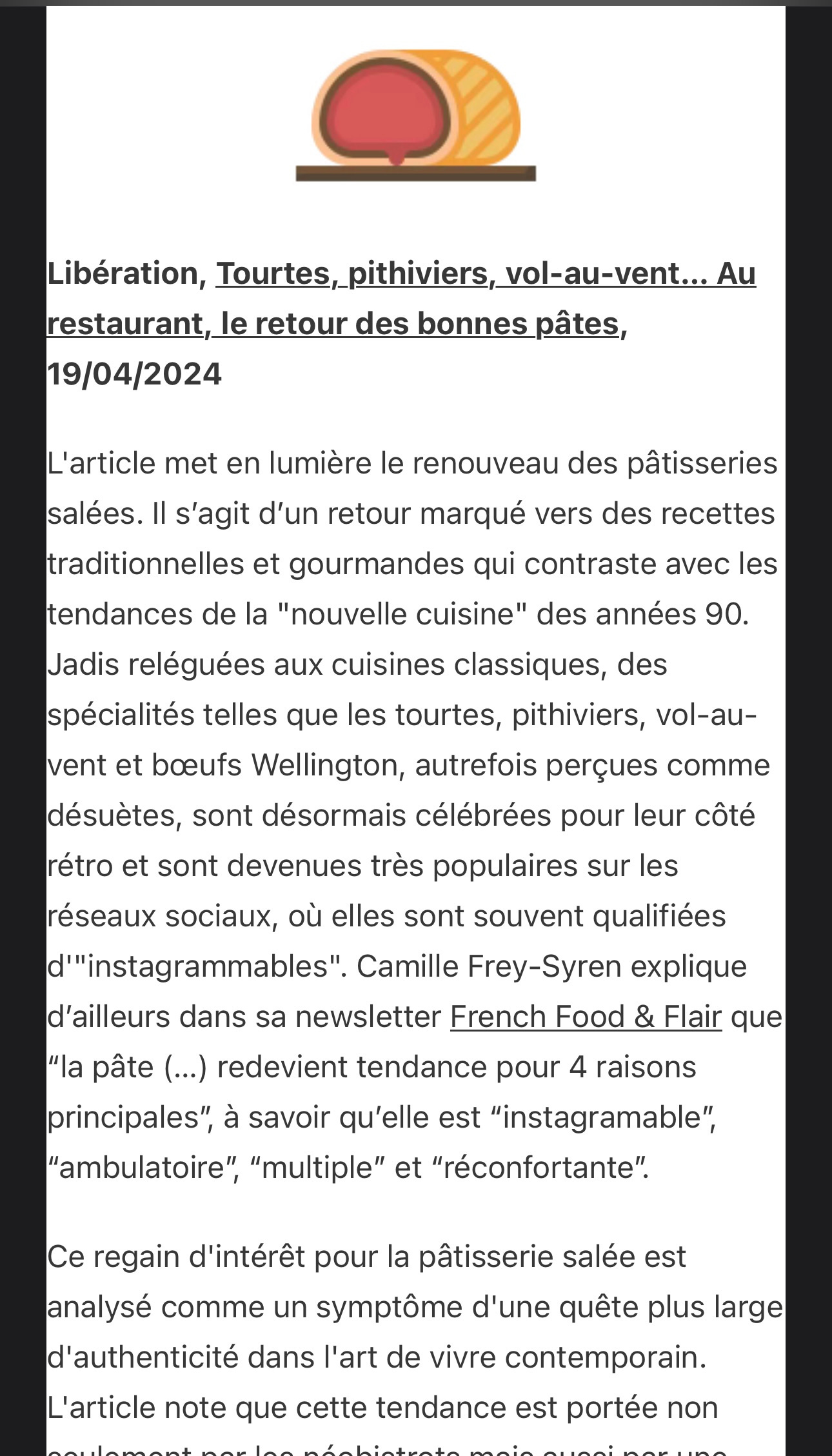
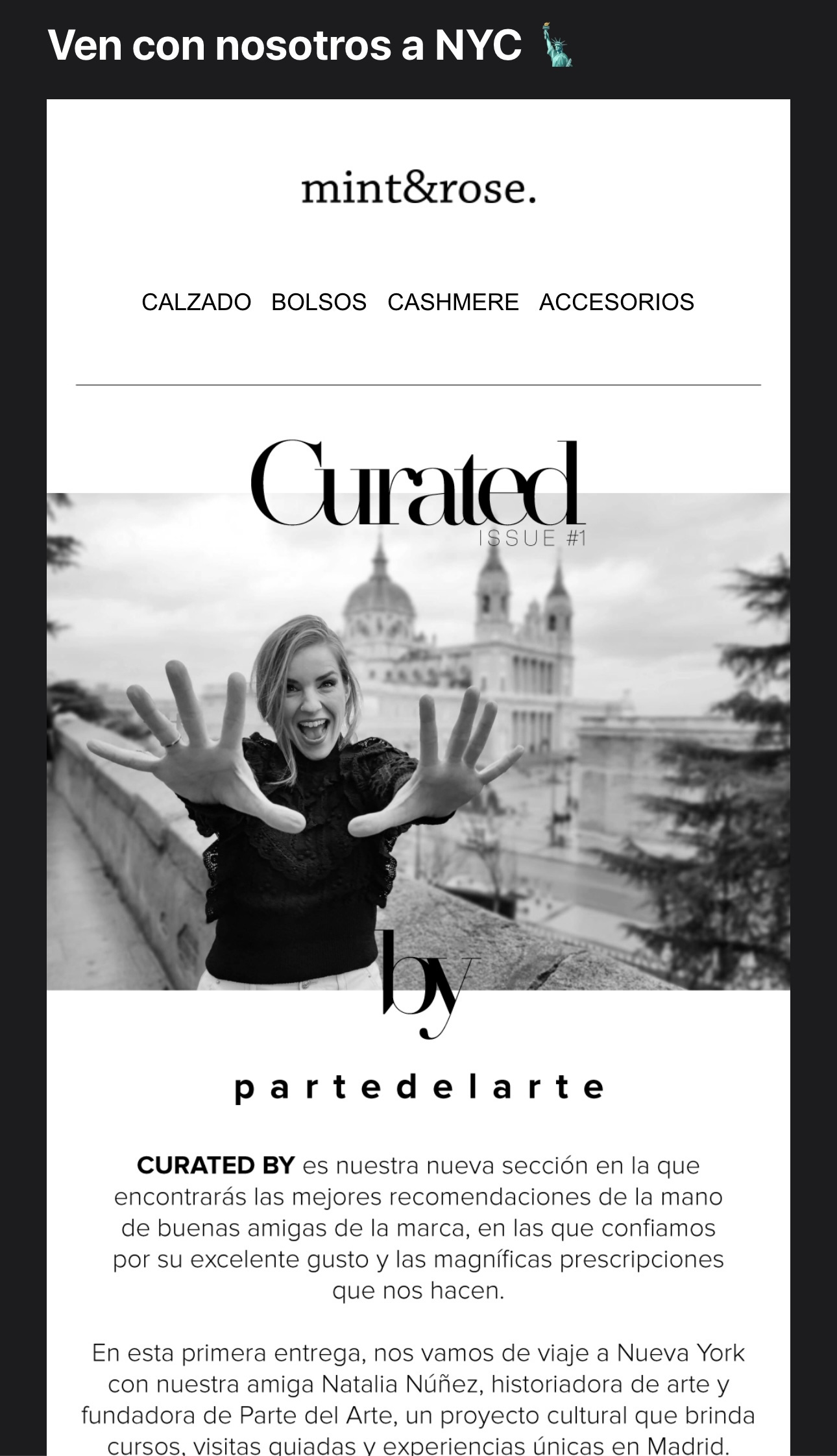





Honored to be part of this bokeh edition 🤩